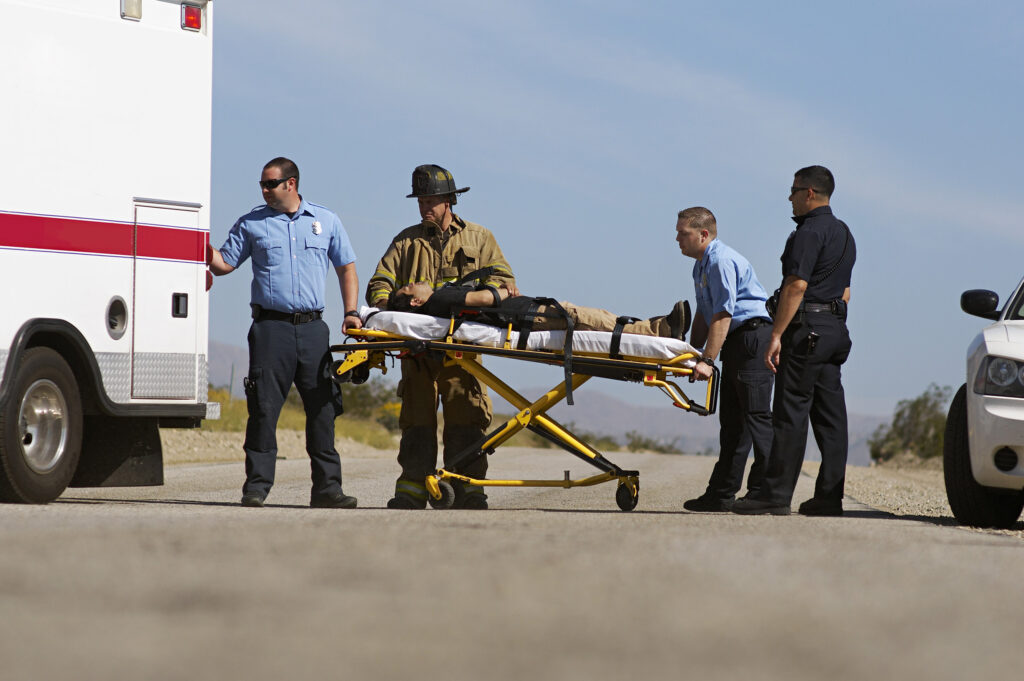

Case Study: Supporting Your Team During a Medical Emergency
Keeping You Informed on Remote Work Safety
In today’s fast-paced world, remote healthcare and safety have revolutionized the way we access essential medical services, bridging the gap between distant locations and quality healthcare. While this innovation has undoubtedly opened up new possibilities, it also comes with its distinct set of challenges and risks. At Via Medica, we recognize the importance of ensuring the safety and well-being of remote workers and communities. In this article, we will explore the concept of “Duty of Care” in remote sites and provide insights into effectively managing medical and security risks. Additionally, we’ll present a compelling case study illustrating how Via Medica can support you and your teams during a medical emergency in a remote site.
The Importance of Duty of Care in Remote Sites
Duty of Care refers to the legal and ethical obligation an organization has to ensure the safety, health, and well-being of its employees, especially when they are working in remote or hazardous locations. This duty extends not only to employees but also to contractors, visitors, and the surrounding communities. In remote work environments, where access to immediate medical assistance may be limited, Duty of Care becomes even more critical.
Challenges and Risks in Remote Work
Remote work settings present a unique set of challenges and risks, including:
- Limited Access to Healthcare: Remote sites often lack nearby medical facilities, making it essential to have adequate medical resources on-site.
- Communication Barriers: Remote areas may have limited or unreliable communication infrastructure, hindering the ability to call for help during emergencies.
- Safety and Security Concerns: Isolation in remote locations can make workers vulnerable to safety and security threats, both natural and man-made.
- Healthcare Professional Availability: Finding qualified medical personnel willing to work in remote sites can be challenging.
- Logistical Challenges: Transporting injured or ill individuals from remote locations to medical facilities can be time-consuming and complex.
Via Medica’s Approach to Remote Work Safety
At Via Medica, we understand the importance of addressing these challenges to ensure the safety of remote workers and communities. Our comprehensive approach to remote work safety includes:
- Medical Staffing: We provide qualified medical personnel who are experienced in remote healthcare, ensuring prompt and professional medical care on-site.
- Emergency Medical Services: Our swift and efficient emergency response services prioritize patient well-being and include event coverage, ground ambulance services, and medical staffing for all types of events.
- Security Assistance: We offer security assistance services to address safety concerns and ensure the security of remote sites.
- Training and Education: We empower remote workers with training programs, equipping them with the knowledge and skills needed to handle medical emergencies effectively.
Case Study: Supporting Your Team During a Medical Emergency
Imagine a scenario where one of your team members working in a remote site experiences a severe medical emergency. Access to immediate medical care is limited, and the situation is critical. This is where Via Medica steps in.
In this case study, we share the story of how Via Medica’s team, equipped with medical expertise and a commitment to Duty of Care, responded to the emergency swiftly and effectively. From providing immediate medical attention to coordinating a seamless evacuation, our services made all the difference in ensuring the well-being of your team member.
The Case
- Recently, we encountered a case that underscored the importance of preparedness, quick thinking, and teamwork in managing a life-threatening medical emergency. This case study details the successful management of a 50-year-old male who presented to our remote site clinic with chest pain, dyspnea, and diaphoresis – classic symptoms of a myocardial infarction (MI).
The Arrival
- The patient’s symptoms were alarming: chest pain described as if “an elephant is sitting on his chest,” radiating to the left arm, and accompanied by dyspnea and diaphoresis. He was a heavy smoker, a significant risk factor for cardiovascular disease. Upon arrival at our site clinic, his condition was promptly assessed.
Initial Assessment
- The patient, a 50-year-old male, appeared alert and oriented but was in distress, rating his chest pain at 8/10. His vital signs were concerning, with a blood pressure of 160/100 mmHg, heart rate at 100 beats per minute, respiratory rate at 22 breaths per minute, and an oxygen saturation of 95% on room air.
Diagnostic Clue
- An electrocardiogram (ECG) was quickly obtained and revealed ST-segment elevation in leads V1-V4, a strong indication of anterior ST-elevation myocardial infarction (STEMI). This finding was a game-changer for our approach.
Immediate Intervention
- Time was of the essence. Aspirin 300 mg orally and sublingual glyceryl trinitrate (GTN) spray were administered by our GP on duty. The patient was stabilized and prepared for transfer. He was connected to a portable monitor, given oxygen, and received IV fluids. Nitroglycerin and metoprolol were administered to manage blood pressure and heart rate. In the ambulance, accompanied by a nurse and doctor, the patient’s chest pain improved to 4/10 after receiving initial medications.
Transfer and Catheterization
- Upon arrival at the hospital, the patient’s condition was reassessed. His blood pressure had decreased to 140/90 mmHg, heart rate was 90 beats per minute, respiratory rate remained stable, oxygen saturation improved to 98% with supplemental oxygen, and his temperature remained normal. In the catheterization lab, a complete occlusion of the left anterior descending coronary artery (LAD) was confirmed. Successful percutaneous intervention and drug-eluting stent implantation in the LAD resulted in the restoration of normal flow (TIMI = 3).
Transfer and Catheterization
- Upon arrival at the hospital, the patient’s condition was reassessed. His blood pressure had decreased to 140/90 mmHg, heart rate was 90 beats per minute, respiratory rate remained stable, oxygen saturation improved to 98% with supplemental oxygen, and his temperature remained normal. In the catheterization lab, a complete occlusion of the left anterior descending coronary artery (LAD) was confirmed. Successful percutaneous intervention and drug-eluting stent implantation in the LAD resulted in the restoration of normal flow (TIMI = 3).
Road to Recovery
- Fast forward 72 hours, and our patient was ready to be discharged home, remarkably eager to return to work. But when could he safely do so?
The Return to Work
This crucial question is not one to be taken lightly, especially in a high-stress, remote work environment. Our patient’s case highlights the importance of a careful, individualized approach to return-to-work decisions post-MI. The patient’s safety, health, and long-term well-being took precedence.
In this instance, we conducted a thorough assessment of his cardiac function and discussed his condition with a cardiologist. His willingness to follow medical advice and adhere to a tailored cardiac rehabilitation program played a pivotal role in our decision. After detailed consultations, we recommended that he return to work gradually, with close monitoring, ensuring a balanced workload and stress management.
Conclusion
This case exemplifies the critical role of remote site clinics and medical teams in managing unexpected and life-threatening emergencies. It also underscores the importance of prompt diagnosis, effective teamwork, and a patient-centered approach. Our patient’s successful recovery and eagerness to return to work serve as a testament to the impact of remote site medicine on individuals’ lives and well-being.
In remote environments, every medical professional must be prepared to face challenging situations. Through proactive measures, rapid response, and collaborative decision-making, we can continue to provide quality healthcare, even in the most challenging of settings.
Remote work safety is a paramount concern in today’s interconnected world. With the right approach and support, organizations can fulfill their Duty of Care and mitigate the unique risks associated with remote work settings. Via Medica is committed to keeping you informed and prepared for any remote work safety challenges that may arise. We are here to support you and your teams, ensuring that even in the most remote corners of the globe, quality healthcare and safety are never out of reach.



